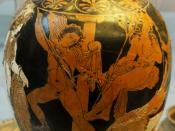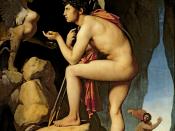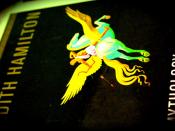The study of myths probably began in the 4th century. BC. when Euthemerus explained
them as exaggerated adventures of historical individuals. The allegorical interpretation of
myths , stemming from the 18th century study , says that at one time myths were invented
by wise men to point out a truth, but after a time myths were taken literally. The linguistic
corruption interpretation says that myths could be understood as allegory for events found in
nature. The Jungians school denoted myths as a mechanism of wish fulfillment. Sir James
Frazer, believed that all myths were originally connected with the idea of fertility in nature,
with birth, death, and resurrection of vegetation as a constantly recurring motif. Though the
modern interpretation of myths is not general but a specific explanation for myths of a single
people. The theological interpretation states that myths are foreshadowings of facts of the
Scripture or corruptions of them.
This view, which is not contemporarily popular, is
surprisingly enlightening when attention is paid to the meaning of names of characters and
places in relation to Biblical stories. Even recent fairy tales which fall into the category of
myth, often reveal through metaphor more truth in scripture than one would anticipate.
The most relevant and necessary topic for the understanding of the imagery and
symbolism of myth is found in the framework of the celestial zodiac. The pictures found
today in the zodiac were not developed by the Greeks, but were in place perhaps as early as
4000 B.C. predating even the civilizations of Sumaria. The pictures were not arranged in
haphazard order to aid in the tracking of the star movements but with order and purpose of
depicting an epic narrative. This understanding of the zodiac reveals an intelligence and
scientific understanding that was corrupted through time .


